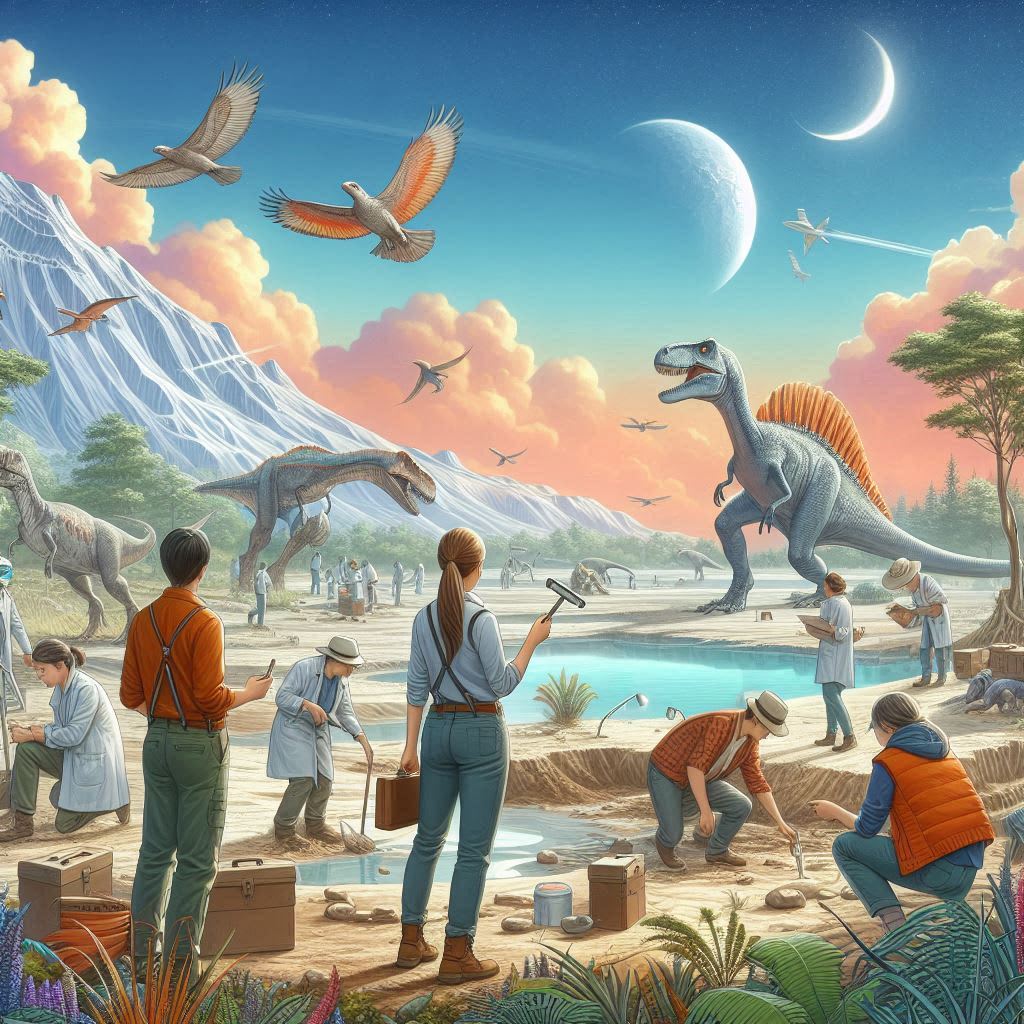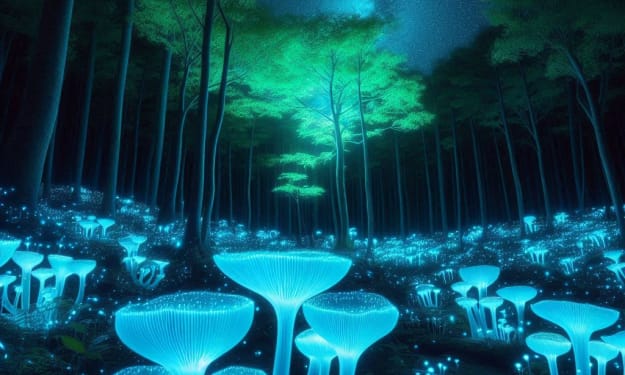Feathers, Fury, and Footprints: The Enduring Allure of Dinosaurs
Dinosaurs are the coolest things ever!" - Every Kid Ever

Feathers, Fury, and Footprints: The Enduring Allure of Dinosaurs
This sentiment isn’t limited to wide-eyed children; it resonates with paleontologists, museum enthusiasts, and movie lovers alike. Beyond the iconic T-Rex roars from Jurassic Park and the majestic Brachiosaurus skeletons in museums, lies a realm of scientific wonder waiting to be explored.
2024 marks a significant milestone: the 200th anniversary of William Buckland’s groundbreaking research on Megalosaurus. Buckland, a trailblazer in paleontology, laid the groundwork for our modern understanding of these magnificent creatures. In this article, we delve into the captivating world of dinosaur research, exploring questions that have fascinated scientists for centuries. Our journey spans time, piecing together the puzzle of dinosaur evolution, unraveling extinction mysteries, and diving into recent discoveries that reshape our perception of these prehistoric giants.
Get ready for awe! We’ll explore everything—from unexpected feathers on certain dinosaur species to the detective work behind analyzing fossilized footprints. Let’s paint a vivid picture of what life might have been like for these incredible beings. Brace yourself for a thrilling expedition into the dinosaur world
The Dinosaur Detective Game: Unveiling Evolution and Extinction
Imagine yourself as a paleontologist, a detective in the grand museum of time. Your tools are not magnifying glasses and fingerprint dust, but meticulous excavation techniques and a keen eye for detail. The clues? Fossilized bones, teeth, and footprints scattered across the globe, each fragment whispering secrets about the lives of dinosaurs millions of years ago.
One of the biggest mysteries surrounding dinosaurs is how these diverse species evolved and ultimately met their demise. By piecing together these fossilized puzzles, scientists have unraveled a remarkable story. Imagine the colossal Brachiosaurus, its long neck and powerful legs adaptations for reaching high foliage, a testament to the incredible evolutionary pressure that drove dinosaurs to thrive in various ecological niches. Compare that to the swift and agile Velociraptor, with its sharp claws and sickle-shaped toe for hunting prey. These differences highlight the amazing diversity of dinosaur adaptations.
The question of dinosaur extinction has sparked much debate. The most widely accepted theory points to a massive asteroid impact 66 million years ago, triggering a global catastrophe that drastically altered the Earth's climate and led to the demise of not just dinosaurs but many other species. However, recent research suggests the event may have been even more complex, with volcanic eruptions playing a role alongside the asteroid impact.
A Glimpse into Dinosaur Lives: Growth, Behavior, and Interactions
Fossils not only reveal physical features but also offer clues about dinosaur growth patterns. Growth rings similar to those found in trees have been identified in dinosaur bones, allowing scientists to estimate their age and growth rates. For example, Tyrannosaurus Rex, the iconic predator, likely reached adulthood in just a few years, while some sauropods may have taken decades to reach full size.
Dinosaur behavior is another area of active research. Footprints and fossilized trackways reveal evidence of herding behavior in some species, like the recent discovery of a massive "death march" of sauropods in Argentina. Bite marks on bones suggest scavenging or predatory interactions. Recent discoveries of fossilized feathers and quill knobs indicate that some dinosaurs, or their ancestors, may have been warm-blooded, further blurring the line between reptiles and birds.
A Journey Through Time: Historical Gems and the Future of Dinosaur Research
Paleontology is not just about the past; it sheds light on the present. Studying dinosaur extinction events helps us understand the impact of climate change on ecosystems. For example, the Chicxulub crater, believed to be the impact site of the asteroid that wiped out the dinosaurs, is now being studied to understand the potential consequences of future large asteroid impacts. Fossils also provide valuable insights into the history of life on Earth, allowing us to chart the course of evolution and appreciate the incredible diversity of life that has existed on our planet.
The Cutting Edge: Biomolecular Paleontology and Beyond
The future of dinosaur research is brimming with exciting possibilities. Biomolecular paleontology, a rapidly evolving field, focuses on extracting DNA from fossils. While complete dinosaur DNA retrieval is still a challenge, recent advancements have allowed scientists to sequence small fragments of dinosaur DNA, potentially offering insights into their evolutionary relationships and physiology. Imagine the possibilities if scientists could reconstruct partial dinosaur genomes, potentially revealing more about their growth rates, diseases, or even their vocalizations!
The Ethical Considerations: Balancing Research and Responsibility
As dinosaur discoveries continue, particularly in developing countries, ethical considerations come into play. Fossil repatriation, the return of fossils to their country of origin, is a growing concern. Collaborations between paleontologists and local communities are crucial to ensure responsible research practices and the preservation of cultural heritage alongside scientific discovery.
The Economic Impact: Dinosaurs as a Thriving Industry
Dinosaurs are not just a scientific fascination; they're a multi-billion dollar industry. Museums with renowned dinosaur exhibits, like the American Museum of Natural History or the Royal Tyrrell Museum, attract millions of visitors each year. Theme parks like Jurassic World bring dinosaurs to life through cutting-edge animatronics and immersive experiences, fueling a thriving entertainment sector. The economic impact extends beyond entertainment as well. Paleontological tourism, where people travel to specific locations known for dinosaur fossils, contributes significantly to local economies.
Citizen Science: The Power of the Crowd
Paleontology isn't just for professional researchers anymore. Citizen science, where the public actively participates in scientific research, is playing an increasingly important role in dinosaur discoveries. Amateur paleontologists with a keen eye and knowledge of dinosaur anatomy can contribute significantly. Many online platforms allow people to report potential fossil finds, which can then be assessed by professional paleontologists. Organized fossil digs often involve citizen scientists alongside researchers, providing valuable manpower and fresh perspectives. The discovery of a new titanosaur sauropod in Argentina in 2014 is a prime example – the initial fossil fragments were spotted by a local rancher who then contacted paleontologists, leading to the excavation of a massive skeleton. Citizen science not only aids in new discoveries but also fosters public engagement with paleontology, inspiring the next generation of dinosaur enthusiasts.
Conclusion
Two hundred years after William Buckland's groundbreaking work on Megalosaurus, our fascination with dinosaurs continues to grow. The journey of dinosaur research has been one of remarkable discoveries, constantly rewriting our understanding of these magnificent creatures. From piecing together their evolution and extinction to unveiling their growth patterns and behaviors, each new fossil find unlocks another piece of the puzzle.
The future of dinosaur research is bright, with biomolecular paleontology offering the tantalizing possibility of unlocking dinosaur DNA secrets. Citizen science initiatives are democratizing the field, allowing anyone with a passion for dinosaurs to contribute. However, ethical considerations regarding fossil repatriation and responsible research practices must be addressed alongside the scientific pursuit.
Ultimately, dinosaurs are more than just prehistoric giants. They serve as a window into the past, helping us understand the history of life on Earth and the delicate balance of ecosystems. Their enduring legacy reminds us of the incredible diversity that has existed on our planet and inspires us to be responsible stewards of the present for the benefit of future generations. As we continue to unravel the secrets of dinosaurs, we not only honor the past but also gain a deeper appreciation for the wonder and fragility of life on Earth.
About the Creator
suren arju
Hi there! I'm Suren, your startup guide. Entrepreneur, writer, dreamer - I share insights, tips & stories to fuel your startup journey. Ready to explore, learn & win together? Join me & let's redefine how we launch, learn & leap!
Enjoyed the story? Support the Creator.
Subscribe for free to receive all their stories in your feed. You could also pledge your support or give them a one-off tip, letting them know you appreciate their work.





Comments
There are no comments for this story
Be the first to respond and start the conversation.